Background:
This post continues a series where Stage 2 tune options for the Mk7 GTI are compared.
In this post, an IS20 Stage 2 tune from Racingline is installed on a Mk7 GTI, and engine and vehicle performance data are recorded for comparison with other stage 2 tune options.
The Racingline tune is installed at a dealer location and I returned to Noster Motorsport in Orlando to have the tune installed.

Flashing the file.
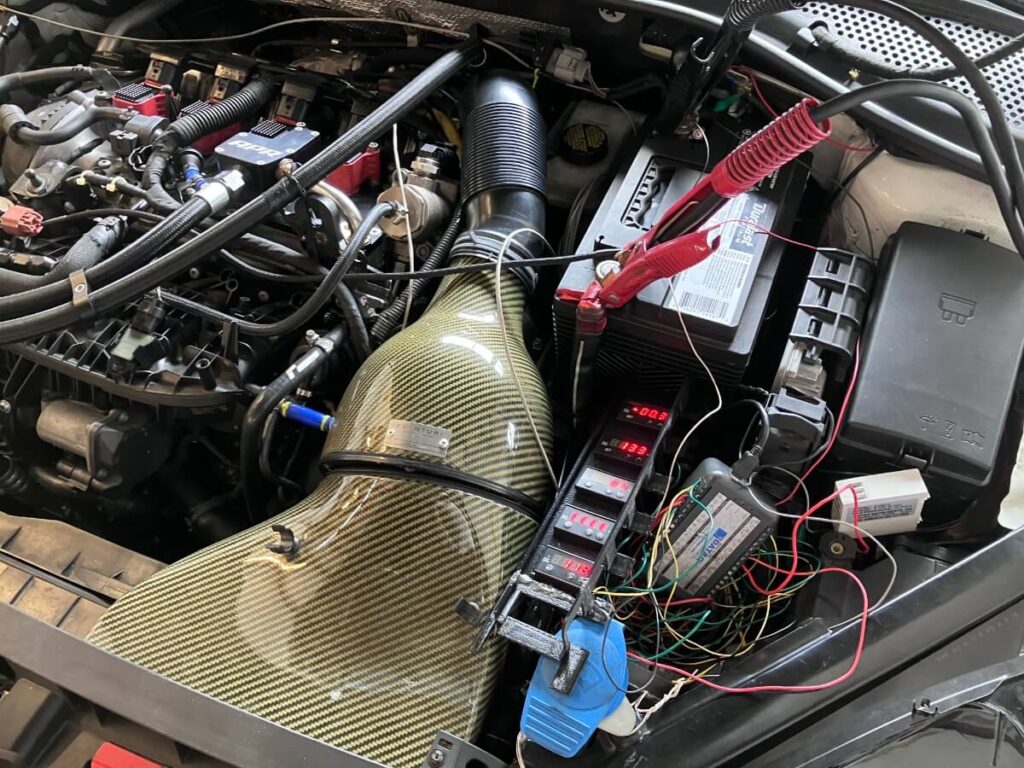
Test procedure:
Information about the data collection procedures is found on the main test page.
An overview of one data collection session is shown below:
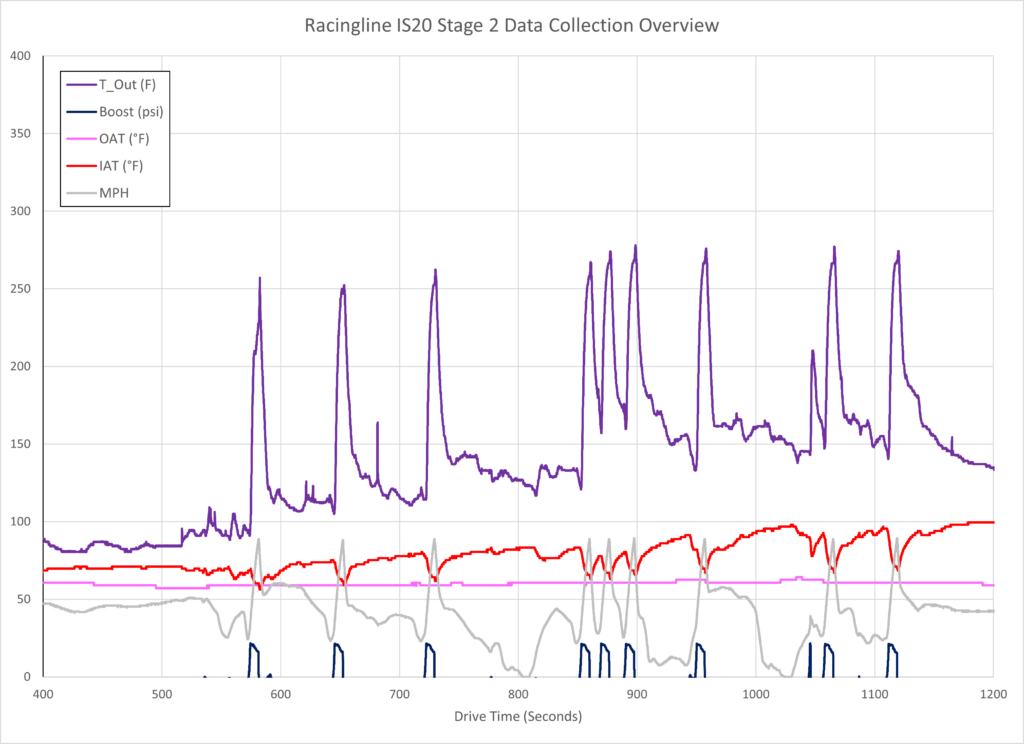
Racingline Test Results:
The next four charts show the typical changes in engine operating variables as engine RPM increases during multiple third-gear full-throttle pulls.
The air-to-fuel ratio is shown with the red lines and the intake air temperature with the pink and purple lines.
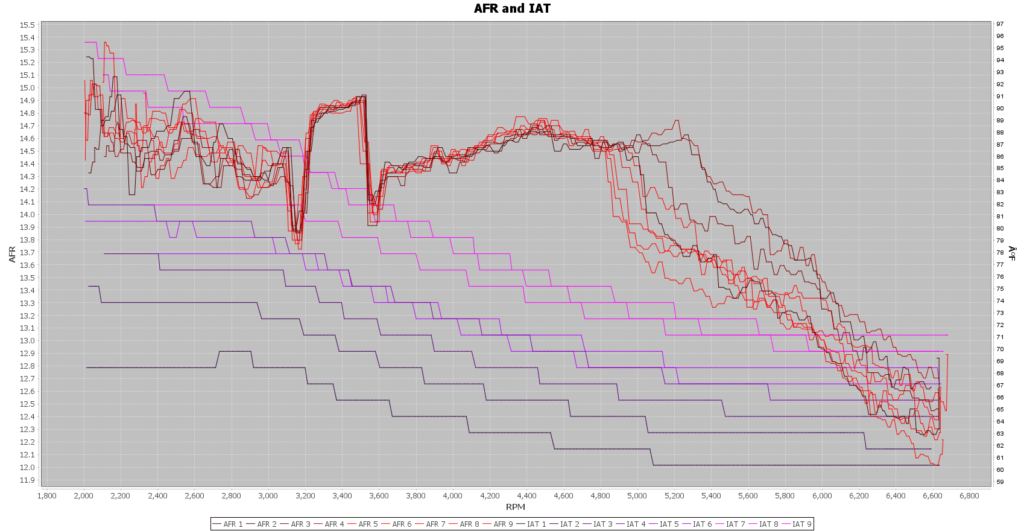
Boost (red lines) and turbocharger wastegate duty cycle (pink and purple lines):
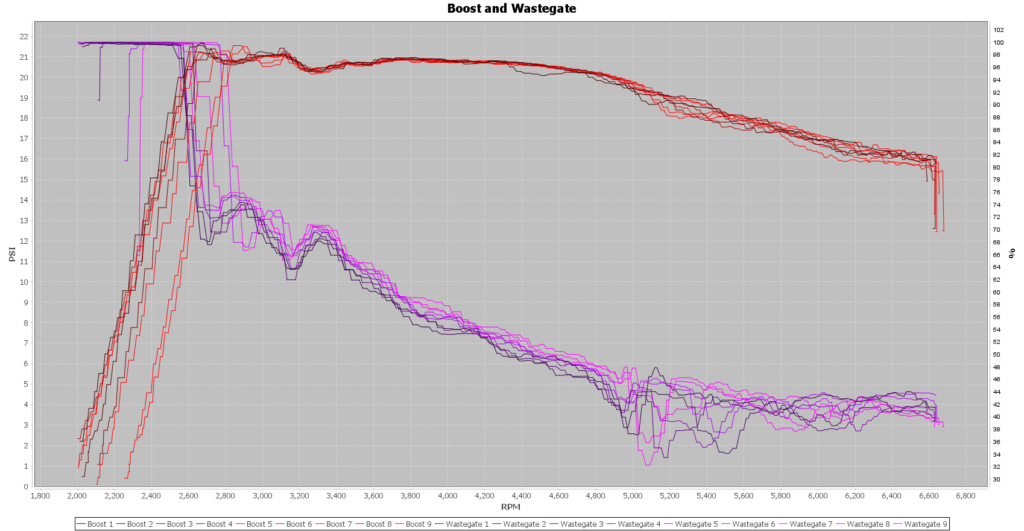
The Ignition Timing Advance (red lines) and occurrences of ignition timing retard (pink and purple lines):
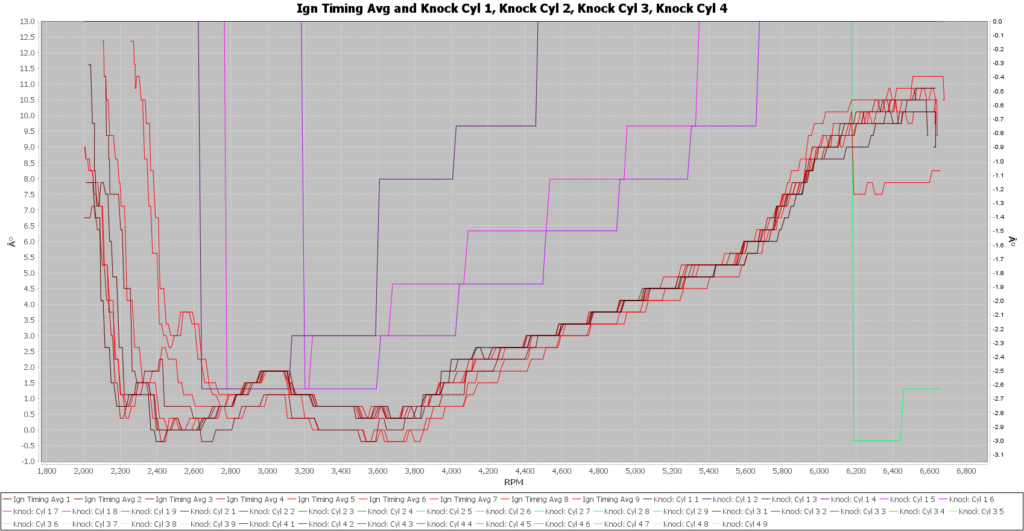
Low-pressure fuel pump duty cycle (red lines) and fuel rail pressure (pink and purple lines):
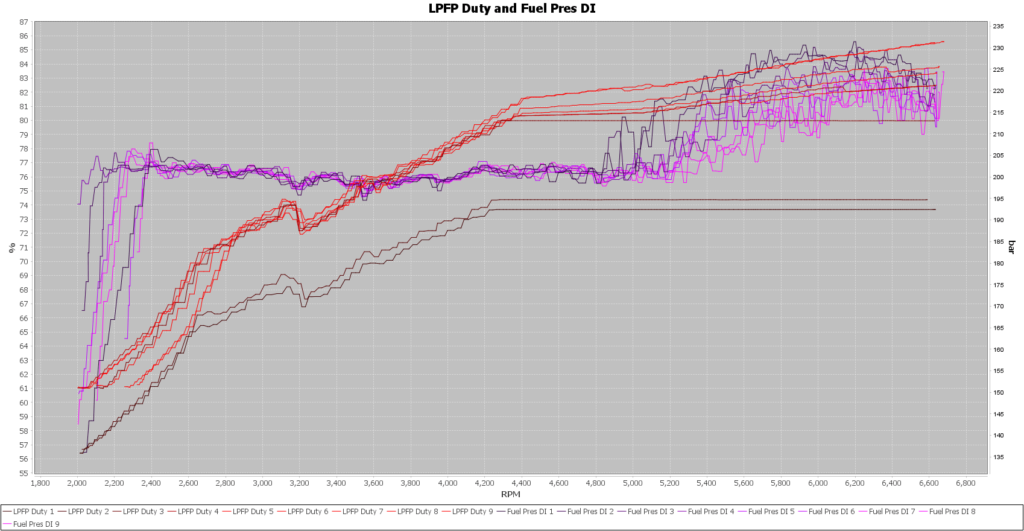
The next chart shows an overview of a series of pulls with a row assigned to each engine cylinder.
The red line is the boost pressure and the white lines are occurrences of ignition timing retard.
This data is used to calculate a Knock Retard Percentage (KR %) which is discussed in detail in the Stratified OTS IS20 Tune Datalog Refinement post in the section titled “KR Percentage”.
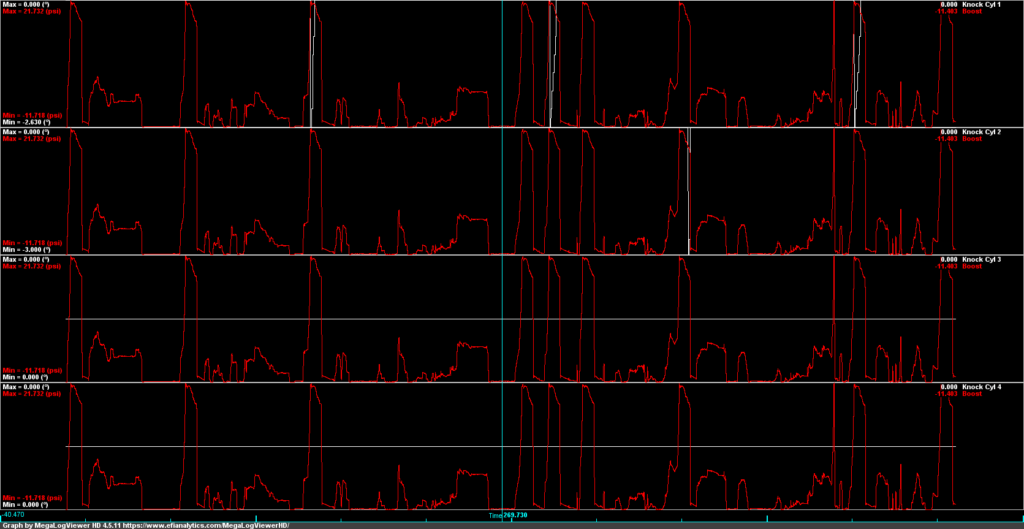
Over a total of 19 pulls, a portion of which is shown above, an occurrence of timing reduction during a pull was recorded during 12% of opportunities.
The next chart shows trends between all of the tunes that have been tested.
The average boost pressure that the tunes operate at between 2900 to 5000 rpm is plotted along with the Knock Retard percentages.
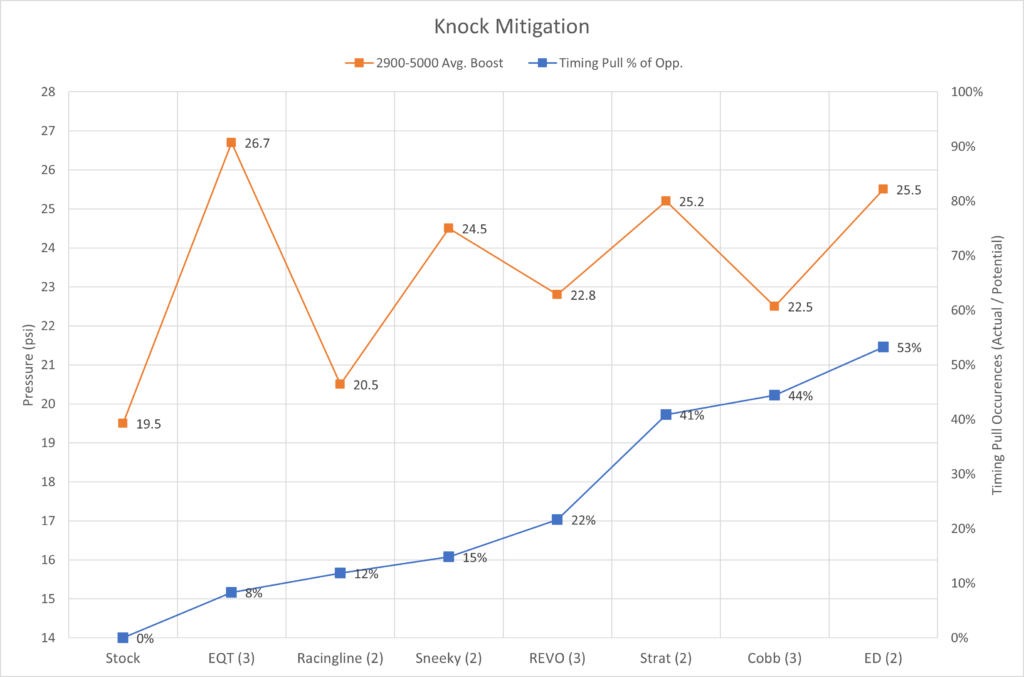
The chart above aims to show the likelihood that a tune is operating with a Knock Threshold that has been raised above the safety levels established by Volkswagen. Operating at higher boost pressure while showing fewer timing reduction occurrences indicates a likely modification to the Knock Thresholds.
As the Cobb Tune comparison showed, in which the Knock Threshold was measured, EQT raised the Knock Threshold higher than the other Cobb-based tuners reviewed (Sneeky Tuned, Stratified, and Cobb).
Racingline operates at lower boost pressure than EQT, therefore the relatively low 12% occurrence of timing reduction is likely a result of the boost level, and not the riskier “numbing” of the knock sensors such as the approach EQT takes.
The next chart shows a subset of pulls that were made to calculate an estimated peak wheel horsepower.
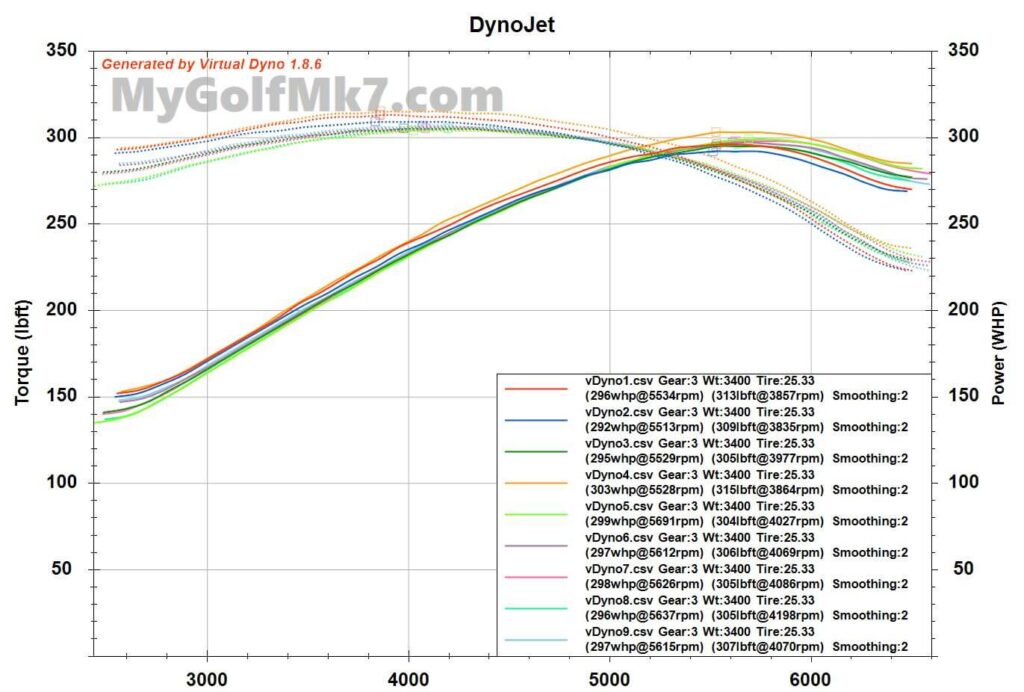
Aftermarket Tune Comparison:
The following charts show a comparison of the Racingline tune with other aftermarket tunes that I previously tested.
The number in parenthesis (x) is the number of individual samples making up the average.
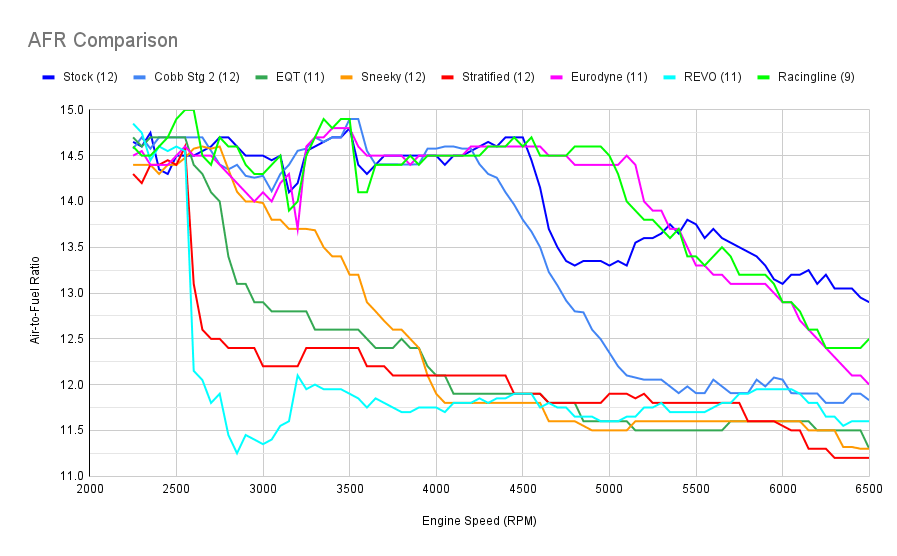
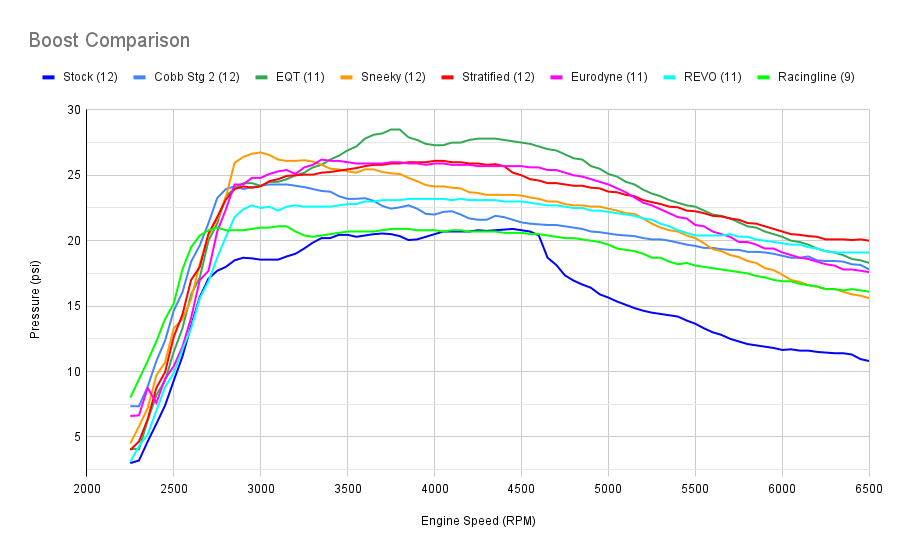
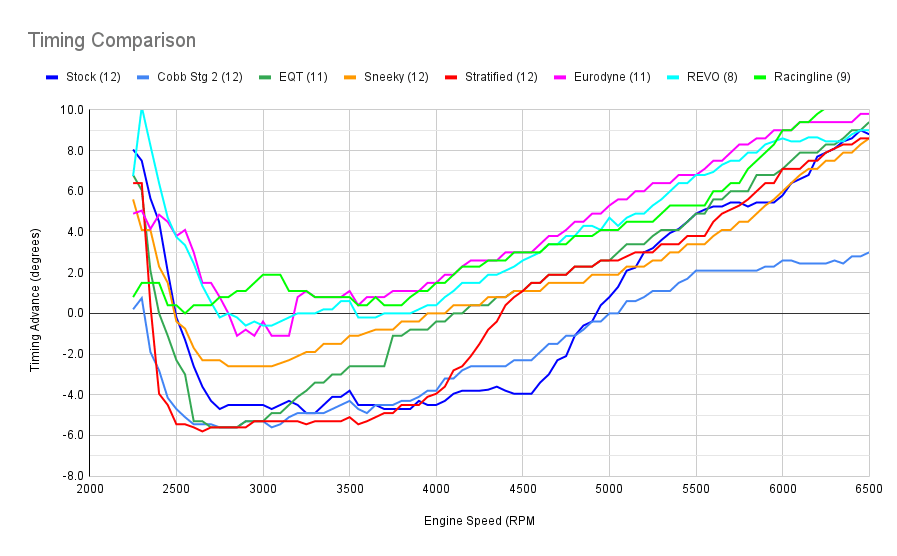
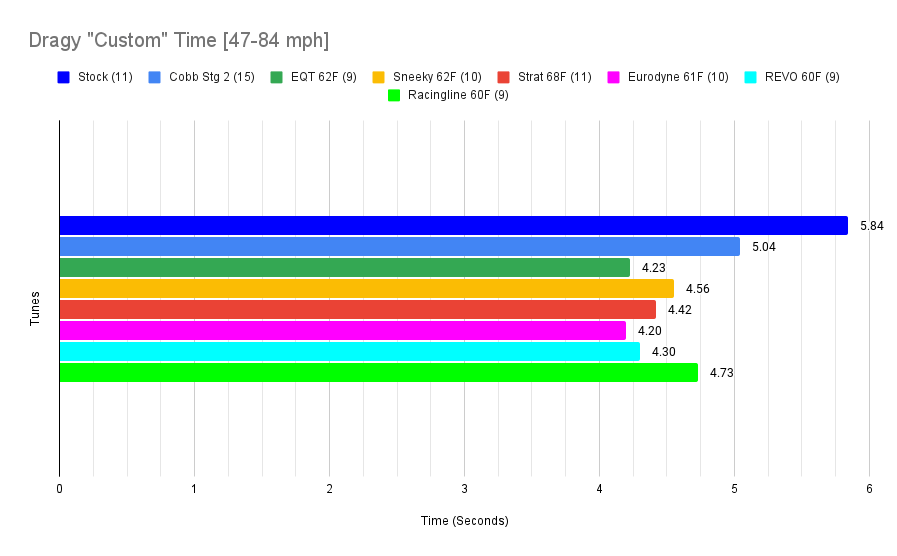

Conclusions:
The Racingline Stage 2 tune for the Mk7 GTI was tested to record engine and vehicle performance variables to compare with other aftermarket Stage 2 tunes.
Most notable from the Racingline tune is the lower boost pressure that it operates at. Presumably, this is influenced by the European market speed limits that I assume Racingline is considering. Presuming the target market operates at higher average speeds, more load could be placed on the turbocharger, and lowering the boost pressure would alleviate some of the concerns about premature failure of the turbocharger.
